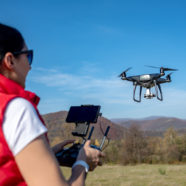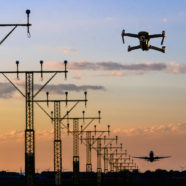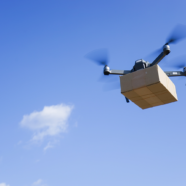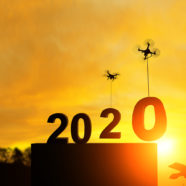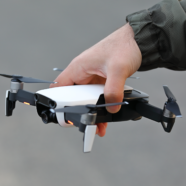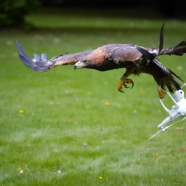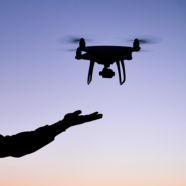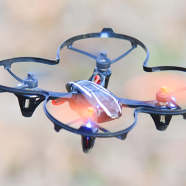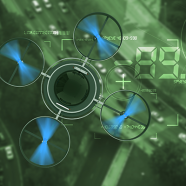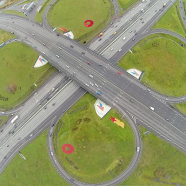Posted by
Steven Miller and Nicole Witt
on Jun 23, 2016 in California Law | 0 comments
A large number of drone-related measures are presently working their way through the California legislature. In light of the FAA’s recently published final rule on drone use and operation, many of these measures may be subject to further amendment—up until a deadline of August 19, 2016. But the following is brief summary of the status of all California drone-related bills as of June 22, 2016:
AB 1662 would require a drone operator to follow the same requirements as a vehicle operator following an accident that results in the injury to another. AB 1662 would require that after an accident involving a drone, a drone operator would have to immediately land the drone and provide certain identifying information to the injured individual or the owner of damaged property. This bill passed the Assembly and was referred to committee in the Senate.
AB 1680 would make it a misdemeanor for a person to use a drone to interfere with the duties of law enforcement or other “first responders.” AB 1680 simply adds drone operators to the existing requirement that no person may stop at the scene of an emergency, unless as part of their job, and interfere with emergency personnel in the performance of their duties. This bill passed the Assembly and was referred to committee in the Senate.
AB 1724 would require anyone operating a drone to place identifying information or digitally store the information on the drone and would impose a fine of up to $2,500 for failure to so identify the drone. This bill is in committee. Its first hearing was cancelled at the author’s request.
AB 1820 imposes restrictions on a law enforcement agency’s use of drones. Before any use, the law enforcement agency would need to develop and make available to the public a policy on the use of drones, and train its staff on such a policy. Even with such a policy in place, AB 1820 would require that a law enforcement agency could only use a drone if it obtains a search warrant, absent exigent circumstances. Finally, AB 1820 would require that all images or data obtained by use of a drone be destroyed within one year, with certain exceptions. This bill passed the Assembly and was referred to committee in the Senate.
AB 2148 would require the Department of Fish and Wildlife and the Department of Parks and Recreation to develop regulations for the use of drones over the lands managed by each department in order to protect wildlife and sensitive species. This bill passed the Assembly and is currently in committee in the Senate.
AB 2320 was a twin to SB 808 before it was amended. It applies to anyone subject to a stay-away order (for example a restraining order arising out of domestic violence). AB 2320 would prohibit such a person from using a drone to fly within the prohibited distance specified in the protective order or from capturing images of the other person using a drone. The bill also permits a judge to prohibit a person required to register as a sex offender from operating a drone if the judge finds it is in the public interest to do so. Lastly, this bill contains non-binding language of legislative intent to prohibit a person from flying a drone within 250 feet of any critical infrastructure in order to gather information or photographs of the facility. This bill passed the Assembly and is in committee in the Senate.
AB 2724 would amend the Civil Code to include the requirement that drones sold in California include a copy of FAA safety regulations, as well as a notice of the requirement to register the drone with the FAA. AB 2724 would also require that any drone with gps capability also be equipped with geofencing software that would prohibit the drone from flying within 5 miles of an airport. Finally, AB 2724 would require owners of drones to buy liability insurance. This bill passed the Assembly and was referred to committee in the Senate.
SB 807 would limit the exposure to civil liability of any emergency responder for damaging a drone that interfered with the provision of emergency services. The bill broadly applies to public and private entities, and to persons regardless of whether they are paid or volunteer. This bill passed the Senate and the Assembly Committee on Privacy and Consumer Protection. The bill is currently in the Assembly Judiciary Committee.
SB 808 was a twin to the original draft of AB 2320. It applies to anyone subject to a stay-away order (for example a restraining order arising out of domestic violence). SB 808 would prohibit such a person from using a drone to fly within the prohibited distance specified in the protective order or from capturing images of the other person using a drone. This bill was referred to committee in the Senate.
SB 809 would prohibit the operation of a drone in the airspace over a public school (K-12) without the written permission of the school principal. This bill was referred to committee in the Senate.
SB 810 would make it a misdemeanor, punishable by up to 6 months in jail and/or $5,000, to operate a drone in a manner that interferes with efforts of firefights to control, contain, or extinguish a fire. This bill was referred to committee in the Senate.
SB 811 would make it a misdemeanor to operate a drone on or above the grounds of a state prison or a jail without prior permission from the Department of Corrections and Rehabilitation or the county sheriff. This bill was referred to committee in the Senate.
SB 868 would prohibit the operation of a drone within 500 feet of “critical infrastructure” designated by the Office of Emergency Services. It would also prohibit operation of a drone within the airspace above most state offices in Sacramento, above a state park, or above any airspace over land or water managed by the Department of Fish and Wildlife, with limited exceptions. This bill passed the Senate and was referred to committee in the Assembly.
SB 1246 would require pest control businesses and government agencies conducting pest control activities, to notify the public at least 7 days before administering pesticides by drone over a residential area. This bill is in committee in the Senate.





